Golfstead is reader-supported. When you buy through links on the site, we may earn an affiliate commission at no extra cost to you. Our affiliations include, but are not limited to, the eBay Partner Network and Amazon Associates.
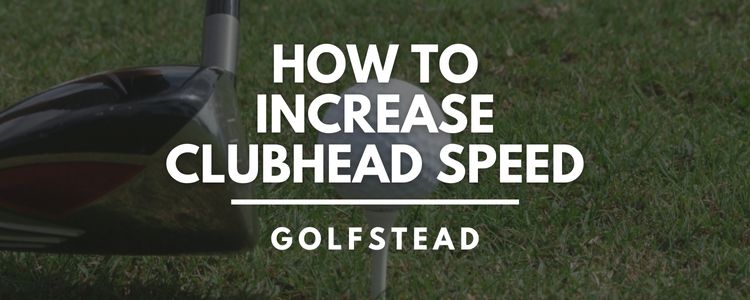
When you’re ready to crank your golf game up to the next level, one of the best things you can do is increase your clubhead speed. This will enable you to hit longer drives and get more distance on your irons.
Some golfers, including many amateurs and seniors, are intimidated by the prospect of increasing their clubhead speed because they worry about what it will do to their swing, but these fears can be assuaged using the proper strategy and tools.
In this article, we’ll show you how to increase clubhead speed in ways that will be safe, effective, and fun. These methods generally apply to drivers, woods, irons, and any other club in the bag.
Top 10 Ways To Increase Clubhead Speed
1. Don’t use a shaft that is too heavy.
One of the biggest killers of clubhead speed is a golf club that is too heavy.
You need a certain amount of weight to your club in order to generate speed, but too much weight will make it very difficult to get into the proper positions to produce speed through the ball.
How heavy your shaft needs to be will depend on your strength, swing speed and tempo. Stronger golfers with faster swing speeds will generally benefit from a heavier shaft, and vice versa for slower swingers.
2. Strengthen your golf muscles.

Probably the most logical thing to do to increase clubhead speed is to strengthen your golf muscles so that you can put more power and speed into the swing.
Do workouts that target the muscles you use when swinging — these key muscles are the glutes (butt), pecs (chest), lats (back), forearm muscles, and core. Relevant exercises include shoulder raises, chest flys, and abdominal crunches.
You can try some explosive exercises such as jumping jacks, squat thrusts, and bench presses to build up muscle mass in key areas including the chest and shoulders; these areas are important for generating enough power during your swing.
3. Use a lighter shaft.
For most amateur and recreational golfers, using a lighter shaft will help generate more speed without sacrificing accuracy.
Beware that if you go too light, it can actually cause your clubhead speed to decrease. This is a phenomenon that is commonly seen by club fitters, and it has to do with the fact that muscle activation is reduced which leads to reduced strength through the swing.
When it comes to shaft weight and flex, it’s all about finding the right balance based on the individual.
4. Improve your flexibility.
The more flexible you are, the easier it will be to make a full turn and generate power.
In particular, good flexibility allows you to create a longer backswing with a wider arc and get into the positions necessary to maximize speed through the shot.
To a certain extent, however, there is a negative correlation between flexibility and muscle mass, meaning that excessive muscle mass can reduce flexibility. This is why you should strive to find a good balance between both.
In a similar vein to flexibility, it is beneficial to increase your hip mobility because this makes it easier to turn in the backswing and downswing. You can do this with workouts like squats and lunges.
Here are some of the best flexibility exercises you can do:
5. Adjust your grip.
There are two elements to a good grip in golf: grip pressure and grip strength.
First, you want to have a grip that is neither too tight nor too loose. An overly tight grip creates tension in the upper body and reduces muscle efficiency, while a loose grip doesn’t allow you to keep enough control of the club through the swing.
Second, assuming you know how to grip a golf club correctly (see our guide on that here), you should consider strengthening your grip by rotating your hands to the right (for a right-handed golfer).
The world’s longest drivers of the golf ball tend to use a strong grip because it promotes a draw shot shape, which naturally goes farther than a fade, and because it allows them to control the club better at high swing speeds.
6. Use a longer club.

It is well-known that using a shorter club will tend to increase control and accuracy but reduce clubhead speed. It then follows that using a longer club will decrease control and accuracy but increase clubhead speed.
There is a limit to this, of course. Increasing the length of the shaft too much will necessitate removing weight from the driver head which will lead to reduced energy transfer (smash factor).
In addition, because a longer club is more difficult to control, it will make sub-optimal contact with the ball more likely which will cause a drop in distance.
So, while swinging a longer club will increase clubhead speed, it won’t necessarily increase distance.
7. Shorten your backswing.
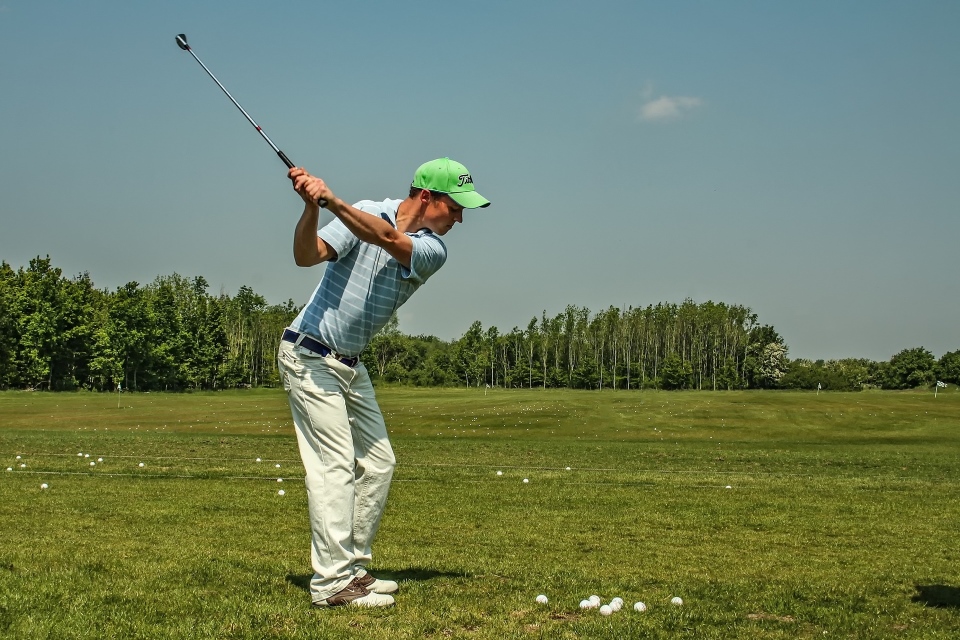
Many people wouldn’t think this intuitively, but shortening your backswing can actually result in faster clubhead speed. This is because you tend to subconsciously compensate for the shorter backswing and it promotes acceleration through the ball.
In contrast, a long backswing gives you more time from the initiation of the downswing to impact to decelerate, which results in reduced clubhead speed.
One effective way to shorten your backswing is to start by gripping the club farther down the shaft. Then, focus on hitting the ball rather than coming to an endpoint in the backswing.
8. Use speed-maximizing clubs.
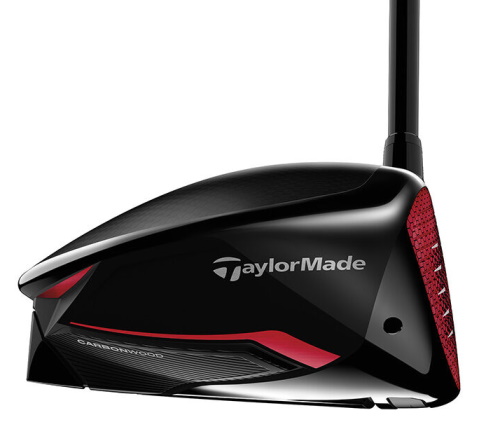
Most modern golf clubs today — particularly drivers and woods, but also irons — have special aerodynamic shapes that are designed to move through the air with as little resistance as possible.
For example, the PING G425 drivers use a technology called Crown Turbulators: these are a series of angled ridges that are designed to improve airflow around the head and increase clubhead speed.
So, transitioning from those old persimmon clubs from 50 years ago to aerodynamically optimized metal woods will likely make a significant difference to your clubhead speed.
9. Widen your stance.
A wider stance can increase clubhead speed in a few different ways:
- it helps you maintain your stability and get a good rotation
- it sets you up to achieve a wider arc in the swing
- it helps you torque the ground more and increase your angular velocity
To achieve a good stance, first position your feet so they’re shoulder-width apart. Then, slowly move your feet outwards until you feel stable. Remember that you can always alter your stance width depending on the shot or club you’re trying to hit.
10. Take golf lessons.
One of the best things you can you for your golf game as a whole is to take lessons from a qualified swing coach, and your clubhead speed is no exception.
It doesn’t matter if you’re a beginner, an experienced golfer, or anything in between. A swing coach will be able to spot flaws and inefficiencies in your swing which, once corrected, will result in more clubhead speed.
For example, a coach may help you hinge your wrists properly during the backswing and teach you how to initiate the downswing properly to generate lag and power.
Additional Tips
1. Develop a consistent swing tempo.
One of the best ways to ensure you have a consistent and powerful swing is to maintain the same tempo. This means taking the same amount of time to complete your backswing and downswing.
A good rule of thumb is that your backswing should take about three times as long as your downswing, so if your backswing is 1 second, your downswing should be around 0.33 seconds.
Practicing with a metronome can help you develop and maintain a consistent tempo.
2. Transfer your weight onto your front foot.

You can’t have a powerful golf swing if you don’t shift your weight correctly.
Generally, your weight should be equally distributed on both feet at address. During the backswing, the weight should shift to the back foot, and during the downswing, it should shift to the front foot. In effect, your weight shifts with the swing.
Finishing the swing with your weight on your front foot will enable you to create more power through the ball. But be careful not to let your lead knee come over your toes, as this can reduce clubhead speed and cause injury.
3. Swing faster, not harder.
Many golfers try to swing as hard as possible (i.e. ‘kill the ball’) and they think that’s how you generate clubhead speed.
But most of the time, this is counterproductive, because it causes tension in your muscles which actually slows them down, not to mention the fact that it makes it less likely you’ll make good ball contact.
When you focus on swinging faster instead of harder, you generate effortless speed and allow your club and the laws of physics to the work. But you should only think about doing this after you’ve developed a strong command over your golf swing so that you can maintain proper form.
Conclusion
There are many things that you can do to increase your clubhead speed. You certainly don’t have to implement everything we’ve covered here, but you should pick a few methods that you like and see if it brings you results.
Many professional golfers can generate a clubhead speed of 120 mph. If you put in the necessary time and effort, you might just be able to achieve that number yourself, and then you’ll be hitting the ball a long way.
Thanks for reading this article. What is your clubhead speed? What are you doing to try to boost it? Feel free to drop a comment below.

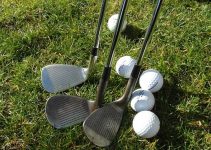

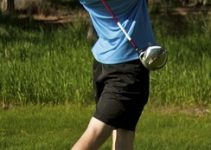
Started when I was 1st man on golf team in high school. 1936. Turned PRO in 2000. Played a lot of golf pro Gene litlart anf Phil Rodgers Handy cap was 0 to 5 up to 1972. Shot my age at 1972 and 1974 and 1974 Now I am 84 just got a club fitting at Callaway Hope to play good for an old man. I am a good putter stile use The agian using the PING given to me by Solhim. Great tips you made.
Nice, Bob. All the best out on the course!
Having correct dynamic loft at impact is also important. My 7 iron 35 degrees at impact my dynamic loft was 27 degrees. Pro showed me tour pro had 16-18 degrees at impact . Eventually I got my dynamic loft down to 20. By bowing my left wrist more I had a cupped left wrist at the top of backswing. Gained 30 yards in a lesson.
Thanks for the tidbit Mark.
If you look at gears data, or read Gravity Golf’s analysis of the golf swing, the body mass starts shifting toward the left heel during the backswing, somewhere around 1/3 to 1/2 way through the backswing, so that that drifting or surfing or falling mass lands and is caught by the left heel at transition or just after,, by the muscles of the left butt. This ‘fall’ into the left heel, and catch by the left side/buttock/leg muscles deflects that falling mass into a rotational movement. If you wait to move the wait toward the target at the top of the backswing it’s too late. It will cause over the top moves, slices, pulls, and weak shots. Pressure plate info is another data point, the pressure on the left foot around half way back goes down. This is similar to the lightening of the weight on the foot you are raising to take a step forward, but the center of mass is falling toward the foot that feels like it is lightening, or lifting from the ground. You pick up the foot you are going to step forward with, which causes your mass to fall forward in that direction, and you catch yourself with the step. This is the same with walking, or throwing a ball. In golf, feel the left heel ‘lighten’ about half way back (club parallel to ground, but keep turning while you feel a drifting sensation of your mass toward that left heel. Catch the fall with your left heel and butt muscles of your left leg at the change of direction /top of the backswing. This lets your mass and gravity produce the forces that power your rotation through the ball. Good luck!
Awesome insights, thanks for sharing.